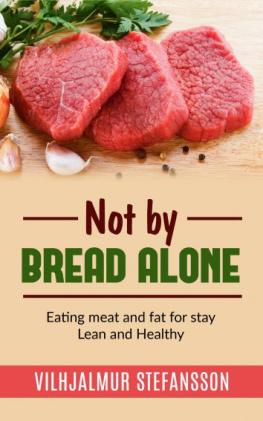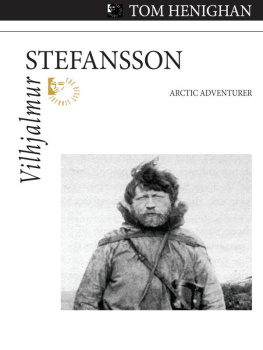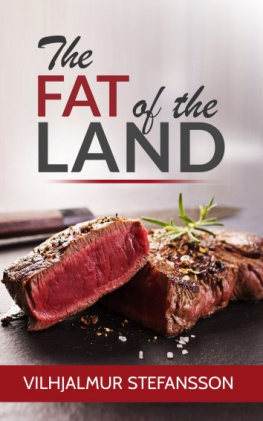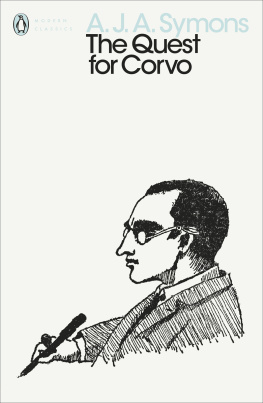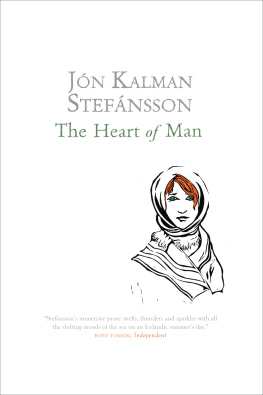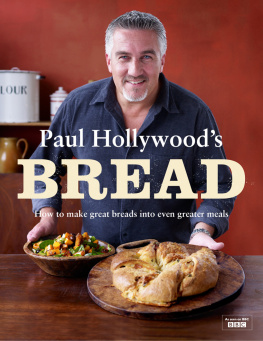Vilhjalmur Stefansson - The Fat of The Land
Here you can read online Vilhjalmur Stefansson - The Fat of The Land full text of the book (entire story) in english for free. Download pdf and epub, get meaning, cover and reviews about this ebook. year: 1956, publisher: The Macmillan Co., genre: Science. Description of the work, (preface) as well as reviews are available. Best literature library LitArk.com created for fans of good reading and offers a wide selection of genres:
Romance novel
Science fiction
Adventure
Detective
Science
History
Home and family
Prose
Art
Politics
Computer
Non-fiction
Religion
Business
Children
Humor
Choose a favorite category and find really read worthwhile books. Enjoy immersion in the world of imagination, feel the emotions of the characters or learn something new for yourself, make an fascinating discovery.

- Book:The Fat of The Land
- Author:
- Publisher:The Macmillan Co.
- Genre:
- Year:1956
- Rating:3 / 5
- Favourites:Add to favourites
- Your mark:
- 60
- 1
- 2
- 3
- 4
- 5
The Fat of The Land: summary, description and annotation
We offer to read an annotation, description, summary or preface (depends on what the author of the book "The Fat of The Land" wrote himself). If you haven't found the necessary information about the book — write in the comments, we will try to find it.
The Fat of The Land — read online for free the complete book (whole text) full work
Below is the text of the book, divided by pages. System saving the place of the last page read, allows you to conveniently read the book "The Fat of The Land" online for free, without having to search again every time where you left off. Put a bookmark, and you can go to the page where you finished reading at any time.
Font size:
Interval:
Bookmark:
THE FAT
OF
THE LAND
by
Vilhjalmur Stefansson
Enlarged Edition of Not by Bread Alone
With Comment by
Fredrick J. Stare, M.D.,
and Paul Dudley White, M.D.
New York
THE MACMILLAN COMPANY
I960
1956 BY
THE MACMILLAN COMPANY
An enlarged edition of NOT BY BREAD ALONE,
copyright. 1946. by The Macmillan Company
All rights reserved no part of this book may be reproduced
in any form without permission in writing
from the publisher, except by a reviewer who wishes
to quote brief passages in connection with a review
written for inclusion in magazine or newspaper.
Third Printing 1961
PRINTED IN THE UNITED STATES OF AMERICA
Comment:
Introductions:
TO
OLIVE RATHBUN WILCOX
Collaborator on fourteen previous books
and on this one
BY FREDRICK J. STARE, M.D.
Professor of Nutrition and Chairman, Department of
Nutrition, Harvard School of Public Health. Boston
day last January the telephone rang. When I answered it, Paul White said: "Stefansson is in town. Could you arrange for someone to stop by his hotel room and draw a blood specimen? You know he has been eating largely meat for most of his life, and it would be interesting to know what his cholesterol and lipoproteins run. I've already asked his permission for a blood specimen, and he has no objection."
Not only had he no objection, but he came over to oar laboratory the next day to volunteer a second specimen so that we might have duplicate samples. And that was my introduction to Vilhjalmur Stefansson. Since then I have seen him and his charming wife, Evelyn, a number of times; our correspondence has been frequent, and I am always amazed at his intellectual vigor and his breadth of knowledge.
Purely by coincidence the School of Public Health was holding a seminar on the afternoon Stefansson came over to volunteer a second blood specimen. Two of its staff were reporting on some field observations of outbreaks of dysentery in the arctic, reports which, of course, we were delighted to invite Stefansson to hear. In the discussion that followed, his keen mind, sharp wit, and above all his anthropologic approach to the study of biologic problems were most evident.
Those fortunate enough to have read the first edition of Not by Bread Alone are aware of its contributions to nutrition. It emphasizes the great capacity of the human organism to adapt to wide changes in food intake and to maintain good health. Above all it deals with the anthropologic approach to a biologic problem rather than with the epidemiologic, clinical, or laboratory avenues of which we hear more these days. The anthropologic approach to nutrition studies helps confirm two pointsone, that good health is realizable by means of a variety of dietary patterns; twoand this point is of particular significance for nutrition eductiondifferent peoples evolve their own evaluations or standards as to proper and improper dietary patterns.
Stefansson spent many years living with the Eskimos in the days before the white man's habits had pervaded these people. He was not a trader, not a missionary, but an observer who took copious notes, most of which are in his priceless collection of arctic lore in the Stefansson collection at the Dartmouth College Library.
The study of cultural factors in nutrition has emerged only recently as a distinct focus of research, marked by the formation of the Committee on Food Habits of the National Research Council in 1941. Wellin, writing in Nutrition Reviews a year ago, mentions that the concept of culture as developed in anthropology refers to those aspects of human existence transmitted through language and group life: "In any given society, culture is the design for living developed by the group, a set of 'regulations' governing the conduct of members. For the individual, culture acts as a screen of values and perceptions through which the person views food, his own body and his health, and the world."
Stefansson began his anthropologic studies of the Eskimos a half-century ago, and thus was one of the first to use this discipline in human biology. It was his observation of the good health of the Eskimos, particularly their good teeth, that interested him in relation to their "lean and fat" diet of meat and that led him in later years, with his friend Andersen, to carry out under scientific scrutiny their year-long meat diet described in this book.
The dominant theme of Not by Bread Alone, whether one is reading about steaks, pemmican, K rations, or biltong, is the importance of meat, lean and fat, in the diet. While Stefansson's early interests result from his personal experiences in the arctic, he has learned much from other travel, extensive reading, correspondence, and discussions.
Stefansson has probably consumed more meat than any other person today. When I gave him dinner at the Harvard Club, Boston, it was roast beef with an extra serving of beef fat; at our home it was steak, with extra fat. Nothing else except Martinis and cheese. Some of the fat is consumed first. This sounds a little like the Du Pont-Holiday-Pennington diet one read so much about a few years ago. In fact, that diet was the Stefansson regimen dressed up with a little "bedside manner" which is a half-hour morning walk and "absolutely no alcohol."
It is of interest to consider Stefansson's high intake of animal fat in connection with the current interest in atherosclerosis. Has it been good or bad for him? Would it be good or bad for you?
Life expectancy at the time of Stefansson's birth was many yean less than it is today, but he is seven years past what it is today. Butand in my opinion an important "but"Stef has never been obese; he has always been active physically, and he doesn't overeat.
Should you start eating more meat, and particularly more animal fat? That depends on what you like to eat, how much you want to spend for food, and how carefully you watch your weight. Of course, if we all began eating more meat, there soon wouldn't be enough, particularly of the "choice" cuts. But the tenderizers do a good job of turning a chuck or top of the round into a first-class dish.
I once asked Stef if the Eskimos used any tenderizing procedure for the tougher cuts of meat, and he reminded me that the answer was in his Not by Bread Alone"even indexed under chewingl" The answer is that they don't; but neither do they do much chewing. "The uncivilized Eskimo has never had practice in herbivorous mastication and his mother has never told him to chew for the good of his health. So he gives the piece a bite or two, rolls it around his mouth once or twice, and swallows."
But Stef is quite convinced that the tougher cuts of meat have the best flavor, and at home Evelyn uses tenderizers generously.
One of the most interesting developments of modern nutrition has been the emergence of a number of studies emphasizing the great ability of experimental animals, including man, to adapt to wide variations in diet. We all need protein, carbohydrate, fat, various vitamins and minerals, and water. But we can get these from a great variety of foods; and Stefansson tells in this book why he thinks we do not actually need any more carbohydrate than is contained in whole meat and whole milk. Even the amounts of these nutrients may be varied appreciably, depending on the rest of the composition of the diet.
It doesn't surprise me that Stef is in good health at seventy-seven, several years after his life expectancy. We have studied a number of vegetarians of comparable age and of equally good health. What is important is that our diets provide us with adequate amounts of the many amino acids, vitamins, minerals, and fatty acids we need, plus enough energy to balance our caloric needs so that we keep our weight in the desirable range. It is also important that we enjoy what we eat.
Next pageFont size:
Interval:
Bookmark:
Similar books «The Fat of The Land»
Look at similar books to The Fat of The Land. We have selected literature similar in name and meaning in the hope of providing readers with more options to find new, interesting, not yet read works.
Discussion, reviews of the book The Fat of The Land and just readers' own opinions. Leave your comments, write what you think about the work, its meaning or the main characters. Specify what exactly you liked and what you didn't like, and why you think so.

